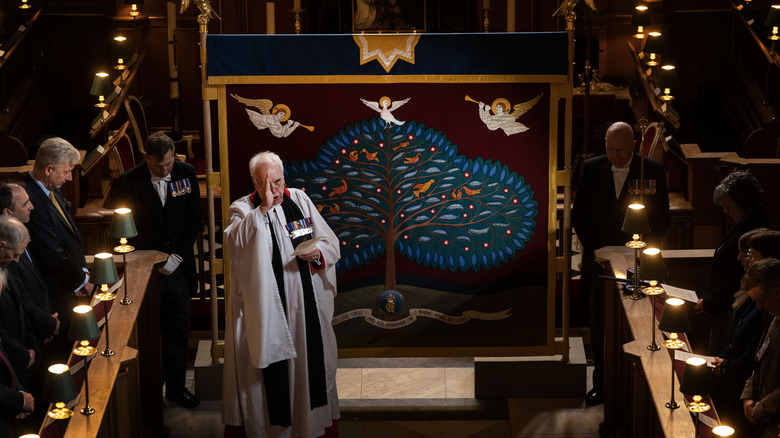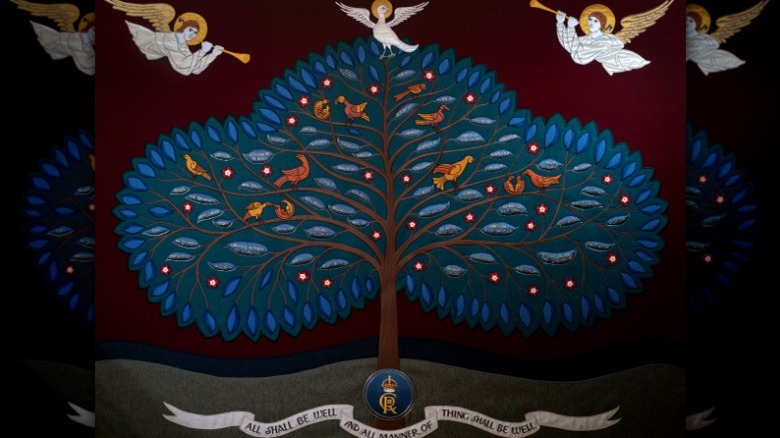The Symbolism Behind The Screen Used In King Charles' Coronation
Around 2,200 people witnessed the coronation of King Charles III in person on May 6, WION reports. Meanwhile, Politico says millions more watched what transpired in Westminster Abbey in London on television. There was one particular part of the ceremony, though, that was hidden from public view, both for those in Westminster Abbey and for anyone who saw it on TV: the sacred anointing ceremony.
Concealing what transpired during this ancient part of the coronation — meant to symbolize the new monarch's "divine right to the throne" — was a special screen, TimeOut writes. And much like everything else involved in the age-old tradition of crowning a British monarch, that screen (pictured above) was loaded with symbolism. For Charles' coronation, the object was made by the Royal School of Needlework.
According to Royal School of Needlework head of studio and standards, Anne Butcher (via People), "It is an absolute honor to work on the Anointing Screen for the coronation of His Majesty The King. The project is a collaboration of specialists in traditional crafts, from those just starting to learn to others with many years of dedicated experience."
The tree on the screen represented the Commonwealth
Most notably, the screen that concealed King Charles III's sacred anointing ceremony featured a tree, patterned after the stained-glass Sanctuary Window in the Chapel Royal at St James's Palace. Each leaf on the tree is meant to symbolize all 56 nations in the British commonwealth, according to Daily Mail. At the bottom of the tree was the king's cypher. There was also the sun, roses, angels, doves, and a scroll with a quote from Julian of Norwich, a Medieval Christian writer. "All shall be well and all manner of things shall be well," it read.
All combined, it symbolized the new monarch's position as servant to the Commonwealth. Certain aspects of the screen's design and construction represent a more modern sensibility: it was made with biodegradable thread, and providing the frame was wood from a centuries-old windblown oak tree on the Windsor estate. Both are in keeping with King Charles III's interest in sustainability.
Aiden Hart of the Greek Orthodox Church designed the screen, and Nick Gutfreund led the team that built it. "The screen is there to provide privacy to the most sacred part of the ceremony," Gutfreund said (via Daily Mail). So what exactly goes on back there? In accordance with ancient practice, the Archbishop of Canterbury first poured holy oil on Charles' head. The archbishop then dipped two fingers in holy oil and anointed Charles on his head, chest, and hands. And why can't we see it? That's because it's sacred.

